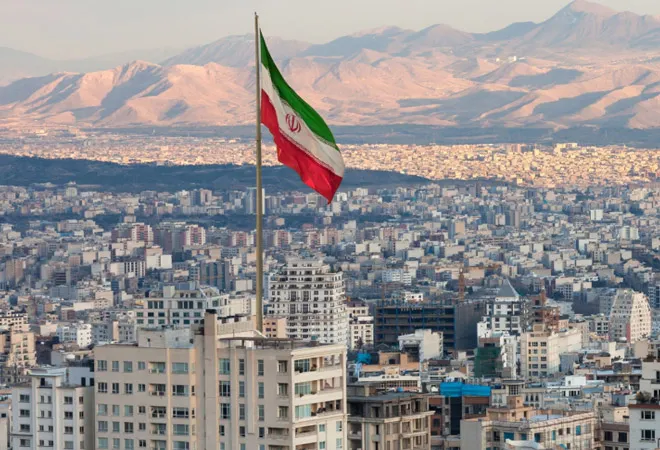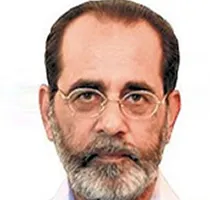Last Friday, Iran elected its eighth president since the 1979 Islamic revolution that ended the Pahlavi dynasty. As expected, Ebrahim Raisi, the chief of the judiciary since 2019, is set to take over from President Hassan Rouhani on August 3. Given Iran’s complex governance structure of a theocracy with partial elective democracy, the elections are pre-determined, though sometimes surprisingly competitive. This time, a low turnout of less than 50% after extending the voting deadline, showed that even by Iranian standards, the non-contest failed to generate interest.
Iran’s governance structure
At the top of Iran’s governance structure is the supreme leader, currently 82-year-old Ayatollah Ali Khamenei, in power since Ayatollah Khomeini’s death in 1989. He is the commander-in-chief of all armed forces and security services, appoints the heads of radio and TV networks and judiciary, and half the 12 member Guardian Council (GC). The GC members need parliamentary approval and in turn, vet candidatures for all elected positions – 290-member parliament, 88-member Assembly of Experts and the President. In addition, GC also examines all legislation to ensure its conformity with Sharia. In case of differences, matter is referred to the 45-member Expediency Council, chosen by the supreme leader. The principal task of the Experts’ Assembly is to approve the new supreme leader.
While the supreme leader is there for life (or till he chooses to retire), the president is limited to two 4-year terms, defining where the balance of power rests between them. Speculation that a new supreme leader is likely to be appointed in coming years made this election critical as Khamenei has to ensure a smooth transition while ensuring preservation of his legacy.
Raisi, a hardliner, owes much of his career progression to the supreme leader and is also seen as a potential successor to the supreme leader. Incidentally, Khamenei too was president from 1981-89 and shortly before Khomeini died, he anointed Khamenei as his successor.
Consolidation by conservatives
Born in 1960, Raisi was a theology student in the holy city of Qom and joined the anti-Shah movement as a teenager. After the Islamic revolution, he embarked on a legal career as prosecutor and during the 1980s, moved to Tehran. Following the eight-year Iran-Iraq war, thousands of political prisoners (declared anti-national and supporters of Saddam Hussein), were sentenced to death by a four-member committee that included Raisi. Later he was deputy chief of the judiciary (2004-14) and the prosecutor-general. In 2017, he was runner-up when Rouhani won his second term in a 73 percent turnout, and appointed judiciary chief later. In 2019, both US and EU imposed sanctions on Raisi on account of his human rights record, for 1980s executions and lethal crackdowns on anti-government protestors, in 2009 and 2019.
Raisi’s victory was clear on 25 May when the GC disqualified strong contenders such as the former speaker Ali Larijani and current vice-president Ishaq Jahangiri, setting the stage for him. Many civil society leaders launched calls for a boycott that reduced the turnout to below 49%, and a record 3.7 million votes cast were blank and void. As an Iranian explained, “How do you pick an orange when all that is on offer are five bananas”? Conservatives already enjoy over two-thirds majority in parliament after the 2020 election.
Setting the stage
Rouhani’s eight-year tenure has been dominated by the nuclear issue and relations with the US. Talks began in 2013 but it was Rouhani’s moderate credentials together with Foreign Minister Javad Zarif’s diplomatic skills that enabled progress. Secret talks with the US in Oman proved invaluable and in July 2015, the nuclear deal (JCPOA) was concluded between Iran and P5+1 (US, Russia, China, UK, France, Germany and the EU). Iran accepted certain constraints on its nuclear programme, especially the uranium enrichment activities, in return for sanctions relief.
Iran’s economy, hurting under the sanctions registered a 12% growth in 2016 only to start shrinking after Donald Trump unilaterally withdrew from the nuclear deal in 2018 and adopted a policy of ‘maximum pressure’ to coerce Iran back to the negotiating table. Iran responded with a policy of ‘maximum resistance’. The economy has been in recession for three years now, amid rising unemployment and inflation running at 40%. Since 2019, Iran began to step up certain nuclear activities, while emphasising that its actions were reversible if sanctions relief was restored, balancing hardliners at home while putting pressure on the EU.
With Joe Biden in the White House, prospects for reviving JCPOA improved. Six rounds of talks in Vienna registered limited progress. However, Rouhani’s hands were tied. Khamenei clearly wanted that a deal, even partial, only be concluded after the elections, in remaining six weeks of his tenure. Rouhani will be responsible for any shortcomings while any relief credit will accrue to Raisi.
Given the situation, the US has played along but the hard negotiation begins now. US will only offer partial relief in return for some Iranian roll-back, holding back to engage the new regime in Tehran. With hardliners now dominant, US expects that internal bickering will end.
Meanwhile, talks last month between Saudis and Iranians in Iraq have raised hopes of movement on Yemen. A change of guard in Israel may provide breathing space in Lebanon and Gaza. The sands in West Asia may be shifting, though ever so slightly.
This commentary originally appeared in Hindustan Times.
The views expressed above belong to the author(s). ORF research and analyses now available on Telegram! Click here to access our curated content — blogs, longforms and interviews.

